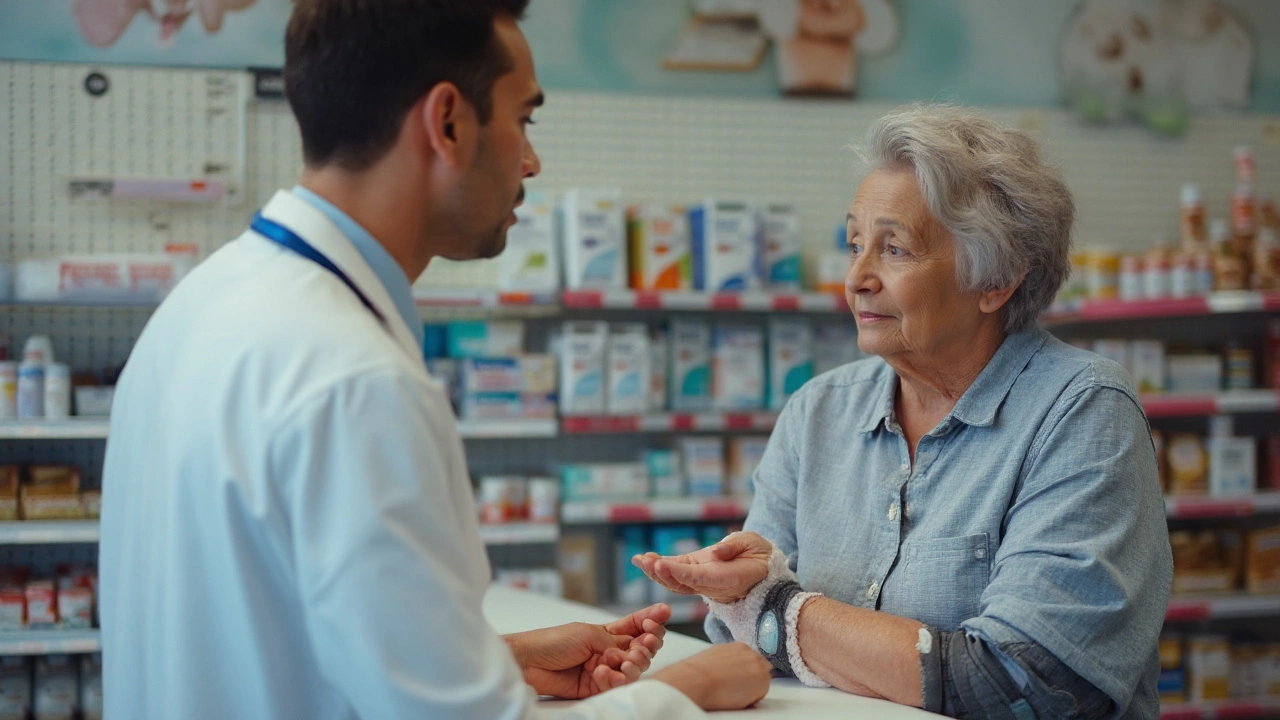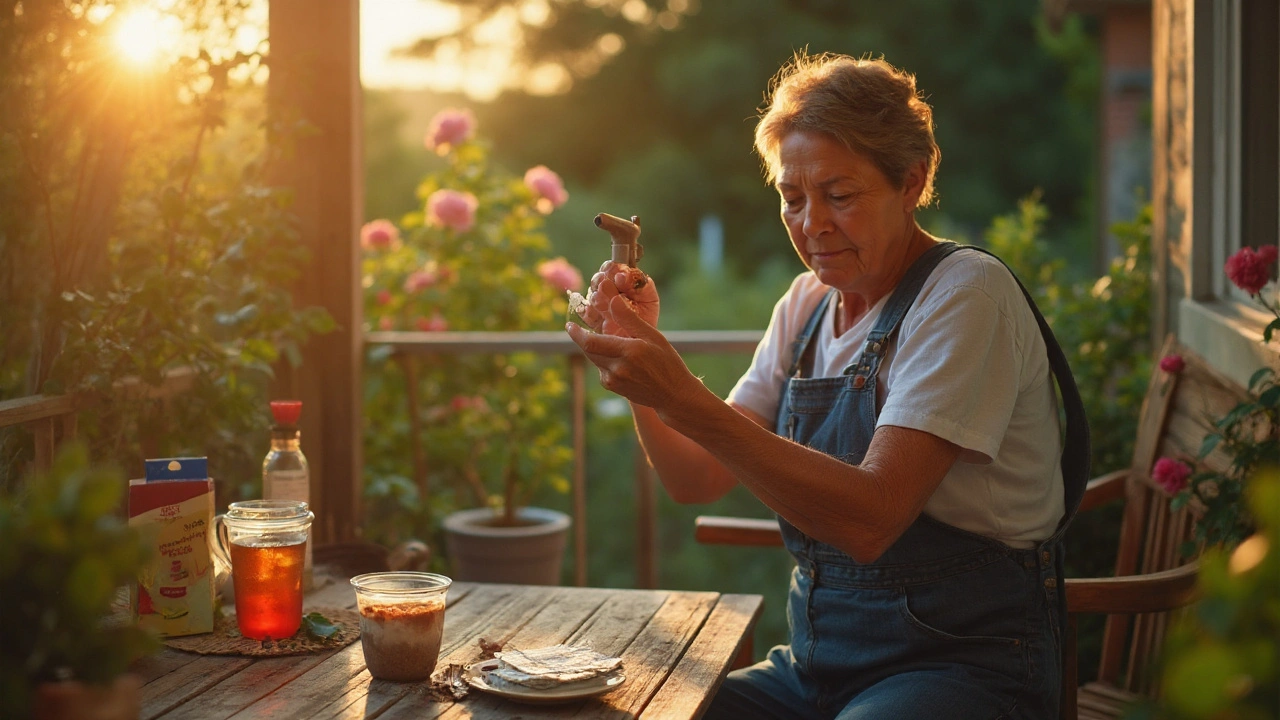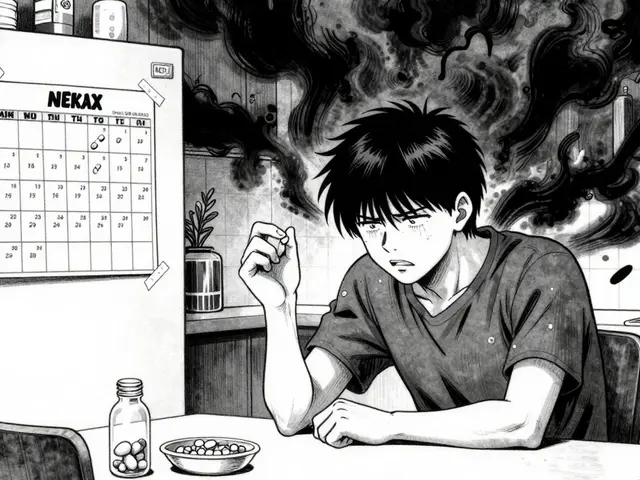Arthritis pain messes with your sleep, your mood, and your plans. Lots of people want fast relief without upsetting their stomach or fuzzing their head. That’s why interest is growing in a combo gel made from salicylate plus a local anaesthetic-choline salicylate with lignocaine (also called lidocaine). Can it calm sore joints quickly and safely? Short answer: sometimes, for the right person and the right kind of pain. It’s a promising niche option, not a magic fix.
TL;DR
- What it is: A topical mix where choline salicylate acts like a local anti-inflammatory/analgesic and lignocaine numbs the area. Useful for small, well-defined, superficial joint pain (hands, knees).
- Evidence: Good evidence supports topical NSAIDs for osteoarthritis. Evidence for salicylate + lignocaine in arthritis is smaller and mixed, but it can help short-term, localized pain. It’s more of a “try-and-see” add-on.
- Best for: People who can’t tolerate oral NSAIDs, want quick spot relief, or need a bridge on bad days. Less helpful for deep hip pain or widespread inflammatory flares.
- Safety: Avoid if you’re allergic to aspirin/salicylates, on certain blood thinners, pregnant late-term, or under 16. Don’t apply to broken skin; stick to small areas.
- How to use: Thin layer on the sore spot up to 3-4 times daily (or as labelled by your pharmacist). Wash hands. Don’t stack with other salicylate rubs on the same area.
What choline salicylate + lignocaine is, how it works, and where the evidence lands
Think of this combo as a two-pronged local pain strategy. Choline salicylate belongs to the salicylate family (same family as aspirin) and reduces pain and some inflammation at the skin and near-joint level. Lignocaine (lidocaine) is a local anaesthetic that quiets nerve signals in the skin and subcutaneous tissues. Together, the idea is: less pain signal coming in, plus a small anti-inflammatory nudge on the surface.
You’ll see it listed as Choline Salicylate Lignocaine in Australia (lignocaine is the Australian name for lidocaine). Historically, this combo is well known in oral gels for mouth ulcers. For arthritis, the use is topical on joints, usually as a compounded gel or cream made by a pharmacist. It’s aimed at osteoarthritis and painful tendons near joints, especially when the painful spot is easy to reach-like the base of the thumb, the knee joint line, or tender nodes in the fingers.
Now the expectations check. The best research we have in osteoarthritis still points to topical NSAIDs (like diclofenac) as first-line topical care. A 2022 Cochrane review and guidance from groups such as NICE (UK) and the American College of Rheumatology say topical NSAIDs help knee and hand osteoarthritis with fewer systemic side effects than pills. Topical salicylates (like trolamine or methyl salicylate) have a spottier track record; older Cochrane work found inconsistent benefits, and when they do help, it’s usually mild to moderate. Lignocaine patches and gels have better proof in nerve-type pain. For osteoarthritis, the data are smaller and mixed-some small trials report relief in knee OA; others don’t show big differences.
So where does the combo fit? The rationale is practical: combine a salicylate (for local anti-inflammatory/analgesic effect) with a local anaesthetic (for fast numbing). If you struggle with oral NSAIDs (sensitive stomach, kidney risks, blood pressure issues), or you only have one or two nagging spots, this mix can be a reasonable trial. In clinic, people often report quick, light relief-enough to get through a walk, stairs, cooking-especially when the sore spot is superficial. That said, if your pain sits deep (hips), widespread (inflammatory arthritis), or flares hot and swollen, you’ll need more than a surface treatment.
What about hard numbers? Big head-to-head trials of this exact combo in arthritis are rare in 2025. Here’s what we do lean on:
- Topical NSAIDs: consistent pain reduction in hand/knee OA, often within 1-2 weeks (Cochrane 2022; NICE OA guidance updates).
- Topical salicylates: benefits are modest and not universal; some people do get relief (Cochrane reviews of rubefacients and older trolamine salicylate data).
- Lignocaine patches/gels: small studies in knee OA show short-term pain improvements in some patients, but not as robust as topical NSAIDs (various RCTs and open-label studies in the 2000s-2010s).
Bottom line: this combo is a reasonable, low-systemic-risk option to try when:
- You need targeted relief on a small area (hand joints, knee edges, tender bursa).
- You can’t or don’t want to take oral NSAIDs.
- You’ve tried topical diclofenac and want a second topical to alternate with, or you’re after faster surface numbing for short tasks.
It’s less likely to shine if the joint is deep, the area is large, or the flare is hot, red, and swollen.
Here’s a quick comparison of common options to help you place this combo in the mix:
| Option | Onset | Typical pain relief (short term) | Systemic risk | Best for | Notes |
|---|---|---|---|---|---|
| Topical diclofenac (NSAID) | 1-3 days; improves over 1-2 weeks | Moderate | Low | Knee/hand OA | Strongest topical evidence in OA |
| Choline salicylate + lignocaine | Minutes for numbing; variable for pain | Mild to moderate (variable) | Low (local) | Small, superficial, focal pain | Evidence smaller; can help selected patients |
| Lidocaine (lignocaine) 5% patch | Within hours | Mild to moderate (mixed in OA) | Low | Localized nociceptive/neuropathic mix | Patch availability varies; Rx in Australia |
| Capsaicin cream | Days to weeks | Mild to moderate | Low | Hand/knee OA | Burning at start; stick with it |
| Oral NSAIDs | Hours | Moderate to strong | Higher (gut, kidney, BP) | Short courses for flares | Use the lowest effective dose |
Sources noted: Cochrane reviews on topical NSAIDs and rubefacients (most recently 2022 for NSAIDs), NICE osteoarthritis guideline updates, and ACR/AF osteoarthritis guidance. Product scheduling and access reflect Australia’s TGA and PBS listings as of 2025.

How to use it: practical steps, safety rules, and a quick decision guide
Formulations vary. In Australia, a choline salicylate + lignocaine joint gel is not a standard mass-market arthritis product. Many people get it via a compounding pharmacy after chatting with their GP or pharmacist. Strengths and ratios differ, so always follow your label. The steps below reflect typical, safe use.
Step-by-step (typical use)
- Target one sore area you can cover with a small dollop (about pea to fingertip size). Avoid large body areas.
- Apply a thin layer on intact skin over the painful spot. Don’t use on cuts, rashes, or infected skin.
- Massage gently for 30-60 seconds. Wash hands after.
- Start with up to 3 times a day. If your labelled instructions differ, follow those. Give it a few days to judge benefit.
- Don’t layer other salicylate rubs (methyl salicylate creams) on the same area. If alternating with diclofenac gel, space them out by at least 4-6 hours and use each on different times of day.
- If you use heat packs, apply the gel first, let it dry for 10-15 minutes, then use a warm (not hot) pack. Heat can increase absorption-go easy.
Safety checklist (2-minute scan)
- Allergy: Skip if you’ve ever reacted to aspirin/salicylates or lignocaine/lidocaine.
- Bleeding risk: Be cautious if you’re on warfarin or other blood thinners; ask your GP/pharmacist before using regular amounts.
- Age: Avoid in children/teens under 16 because of salicylate exposure (Reye’s risk is why this rule exists).
- Pregnancy: Avoid in the third trimester. In early pregnancy or while breastfeeding, get individual advice first.
- Skin: Only on healthy, unbroken skin. Stop if you get a rash, hives, tingling that spreads, or unusual dizziness.
- Area and dose: Small area only. More is not better; overuse can cause ringing in ears, nausea, or numbness beyond the site-back off if you notice that.
Interactions and combos
- Don’t stack multiple salicylate products on the same spot (e.g., deep heat creams plus this).
- If you’re already using topical diclofenac, you can alternate times of day, but monitor skin.
- Oral NSAIDs + this gel: possible, but if you need regular oral NSAIDs, this gel is just a side player. Keep the oral dose low and for short periods.
- Exercise and physio: Use the gel 15-30 minutes before activity to help you move better. Movement is the main therapy; the gel is support.
Decision guide (quick logic)
- If your pain is localized (like one knee edge or thumb base), you can’t tolerate oral NSAIDs, and you want fast spot relief → a trial makes sense for 1-2 weeks.
- If you already get decent relief from topical diclofenac but need a pre-walk boost → use this as a pre-activity add-on (separate timing).
- If pain is deep (hip), widespread, or you have morning stiffness >60 minutes with warm swollen joints → talk to your GP or rheumatologist first; you may need disease-targeted therapy.
- If skin is sensitive or you’ve had rashes to creams → patch-test: tiny amount on forearm skin for 24 hours.
What results to expect
- Onset: lignocaine may numb within minutes; the salicylate part is subtler.
- Relief size: often mild at first. Good days feel easier; bad days feel less bad. Don’t expect it to replace stronger meds during a big flare.
- Timeframe: judge after 1-2 weeks of regular use. If it does little by then, move on.
Common mistakes to avoid
- Smearing it on huge areas. Stick to small, specific spots.
- Layering with other salicylate rubs. That increases exposure without improving benefit.
- Using right before a hot bath or sauna. Heat boosts absorption and can irritate skin.
- Stopping proven basics (strength work, weight management, pacing) and hoping a gel will carry you. It won’t.
Who should absolutely not use it
- Anyone with a known aspirin/salicylate allergy or previous reaction to lignocaine/lidocaine.
- Children and teenagers under 16.
- Late pregnancy (third trimester).
- People with significant skin disease at the site (e.g., eczema flare, infection).

Access in Australia, how it compares, FAQs, and next steps
Access and cost (Australia, 2025)
- Availability: This exact arthritis-focused combo is usually compounded by pharmacies on request. Some off-the-shelf oral gels with choline salicylate and lignocaine exist for mouth ulcers but aren’t meant for joints.
- Prescription: Depends on the formulation. Many compounded topicals are supplied after a GP/pharmacist consult. Lignocaine 5% patches are prescription-only.
- Cost: Varies by compound strength/size. Expect something like AU$30-$80 for a small tube from a compounding pharmacy. Patches and branded products cost more.
- Label: Follow the pharmacist’s label strictly. Compounded strengths differ, so generic dosing you see online may not match your product.
How it stacks up against common options
- Versus topical diclofenac: Diclofenac has stronger osteoarthritis evidence, especially for knees and hands. Try that first unless you can’t tolerate it.
- Versus capsaicin: Capsaicin can help, but you need consistency for weeks and it can sting at first. Salicylate + lignocaine acts quicker but may be milder.
- Versus oral NSAIDs: Pills work better for many, but the side effects add up. A small-area topical is safer for long-term day-to-day aches.
- Versus lignocaine alone: Adding salicylate may give you a bit more anti-inflammatory support than lignocaine alone, especially on sore tendons and joint lines.
Real-world scenarios
- Hand OA (thumb CMC joint): A thin layer before cooking or typing can reduce that sharp, irritating ache. Pair with a short thumb brace and a few minutes of hand warm-up.
- Knee OA with stair pain: Apply 15 minutes before your walk. Use a quad activation drill (mini-squats or straight leg raises) to support the joint.
- Night pain: Light application an hour before bed sometimes cuts down the nagging ache enough to fall asleep. Avoid applying right after a hot shower.
Mini-FAQ
- Can I use it daily long-term? Yes, if your skin tolerates it and you keep the area small. Review every 4-6 weeks to check it’s still pulling its weight.
- Can I combine it with diclofenac gel? Yes, alternate times (e.g., morning diclofenac, afternoon/evening this). Don’t mix on skin at the same time.
- Is “lignocaine” the same as “lidocaine”? Yes-same medicine, Australian vs US name.
- Will it help rheumatoid arthritis flares? It may mute superficial pain, but it won’t treat inflammation driving the flare. You need disease-specific meds-talk to your rheumatology team.
- Does it show up on drug tests? No-these aren’t drugs of abuse.
- What if my knee is swollen and warm? That’s a flare. Surface gels won’t be enough-rest, ice/heat as suits, and speak with your GP if swelling persists or you can’t weight-bear.
- I felt dizzy after a big application. What now? Wash it off with soap and water; avoid reapplying; seek advice if symptoms don’t settle. You likely used too much or applied to too large an area.
Simple action plan (next steps)
- Try a proven topical first: diclofenac gel for 1-2 weeks. If it’s not enough or you need quicker surface numbing for tasks, consider a trial of the choline salicylate + lignocaine combo.
- Keep the test clean: pick one painful spot, use a thin layer up to 3 times daily for 1-2 weeks, and track pain scores (0-10) before and after key activities.
- Watch your skin: any rash or spreading numbness, stop and reassess.
- Pair with movement: 5-10 minutes of targeted strength or mobility after application will often multiply the benefit.
- Reassess after 2 weeks: if you’re not at least 2 points better (out of 10) during daily activities, it’s probably not your product.
When to escalate care
- New, unexplained swelling, redness, or warmth in a joint
- Night pain that wakes you most nights
- Locking or giving way of the knee
- Unintentional weight loss, fevers, or multiple stiff joints in the morning for over an hour
Why you can trust this guidance
This playbook leans on big systematic reviews (Cochrane 2022 for topical NSAIDs; Cochrane on rubefacients), guideline bodies (NICE OA guidance, ACR/AF OA guidelines), and Australian realities (TGA scheduling and access). The combo you’re reading about doesn’t yet have large, definitive arthritis trials behind it, so it’s framed here as a targeted, low-risk experiment for the right situation-something to help you move and sleep a bit better while the essentials (strength, weight, pacing) do the heavy lifting.
If you decide to try it, keep it simple, keep it small, and give it a fair but brief trial. If it helps, great-you’ve added a tool. If it doesn’t, you’ve learned quickly and can pivot to options with stronger proof.






Deon Mangan
August 31, 2025 at 00:32
So let me get this straight-you’re telling me I can slap some chem-lab goo on my knuckles and magically type without my fingers screaming? 🤔 I’ve tried every cream under the sun, and the only thing that works is ignoring the pain and pretending my arthritis is just a really aggressive case of Monday. But hey, if this combo doesn’t kill me, maybe it’ll at least make my coffee runs less of a war crime. Gonna try it next week-witness me live on YouTube: 'Topical Salicylate vs My Thumb: Round 2'.